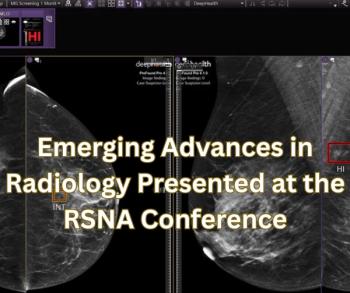
- Diagnostic Imaging Vol 31 No 11
- Volume 31
- Issue 11
Patient-focused design gives direction to Toshiba R&D
Efforts to increase comfort result in speedier exams and improved image quality.
The MR industry today is focused on improving efficiency and accuracy while mitigating issues around imaging claustrophobic and bariatric patients. Toshiba's strategic approach to address these issues is twofold: listen to our customers to deliver technology that meets their needs, and develop high-quality MR systems with patient-centered technology to improve exam efficiency through increased patient comfort.
Because exams are easier to complete in a timely manner when patients are more relaxed, Toshiba's Titan 1.5T MR large, wide-bore system was designed to increase comfort. This has resulted in more efficient imaging of all patients, especially those who are claustrophobic or bariatric. With its ultrashort open bore, Titan also offers the industry's largest clinical field-of-view (55 × 55 × 50 cm). The open bore's larger diameter enables customers to scan bariatric patients with greater ease.
During exams, unnecessary time can be spent moving patients to change coils. Toshiba has dramatically reduced the need to reposition patients with its Atlas coil technology, which is integrated into the table. This feature also enables feet-first imaging for feet-to-shoulder exams, another example of Toshiba's strategic approach to patient comfort.
Pianissimo, our proprietary technology that reduces noise by up to 90%, makes Toshiba's MR systems the quietest available. Lower noise levels with Pianissimo reduce the chance that patients will be startled by the sudden activation of gradient coils. This results in fewer motion artifacts, which improves image quality. Useful for imaging pediatric patients, Pianissimo helps technologists image patients more successfully and reduces the number of repeat exams needed, thereby shortening overall exam times.
Investing resources to develop contrast-free MR imaging techniques more than 11 years ago proved advantageous for patients and providers when a connection was discovered between gadolinium and nephrogenic systemic fibrosis/nephrogenic fibrosing dermopathy (NSF/NFD). The healthcare industry then had immediate access to contrast-free MR angiography (MRA) techniques like fresh blood imaging (FBI) for evaluating peripheral vascular diseases of the lower legs and extremities; contrast-free improved angiography (CIA) for easier acquisition and superior imaging of smaller vessels; time-space labeling inversion pulse (Time-SLIP) for evaluating hemodynamic velocity and functional assessments and visualization of vascular structures; and time-space angiography (TSA) to create noncontrast time-resolved imaging with high temporal resolution. Not only are contrast-free techniques safer for patients with known renal compromise, they also reduce setup time to speed the overall MR exam without compromising image quality.
Staying true to a customer- and patient-focused philosophy, Toshiba is now developing an open-bore 3T MR system (a work-in-progress). Early reports indicate it will be the most comfortable, flexible, and efficient 3T MR scanner available. It will offer a 71-cm aperture, Pianissimo noise reduction technology, and other patient-centric features.
The strategy of listening to customers and developing patient-centered technologies to meet the needs of today's healthcare providers resonates in a healthcare environment in which everyone is expected to do more with less.
Articles in this issue
about 16 years ago
CMS accreditation could crimp in-office self-referralabout 16 years ago
Nonphysician extenders can boost productivityabout 16 years ago
Think outside the box and we'll clean up D.C.about 16 years ago
Radiologists in war-torn country reach out for global supportabout 16 years ago
Just another day in the Baghdad Teaching Hospitalabout 16 years ago
RIS/PACS serves as building block for electronic medical recordsabout 16 years ago
Diagnostic Imaging at 30about 16 years ago
Canadian province probes new radiology reading messabout 16 years ago
Winners get free mammograms!about 16 years ago
Ultrasound aids restaging of melanomaNewsletter
Stay at the forefront of radiology with the Diagnostic Imaging newsletter, delivering the latest news, clinical insights, and imaging advancements for today’s radiologists.




























